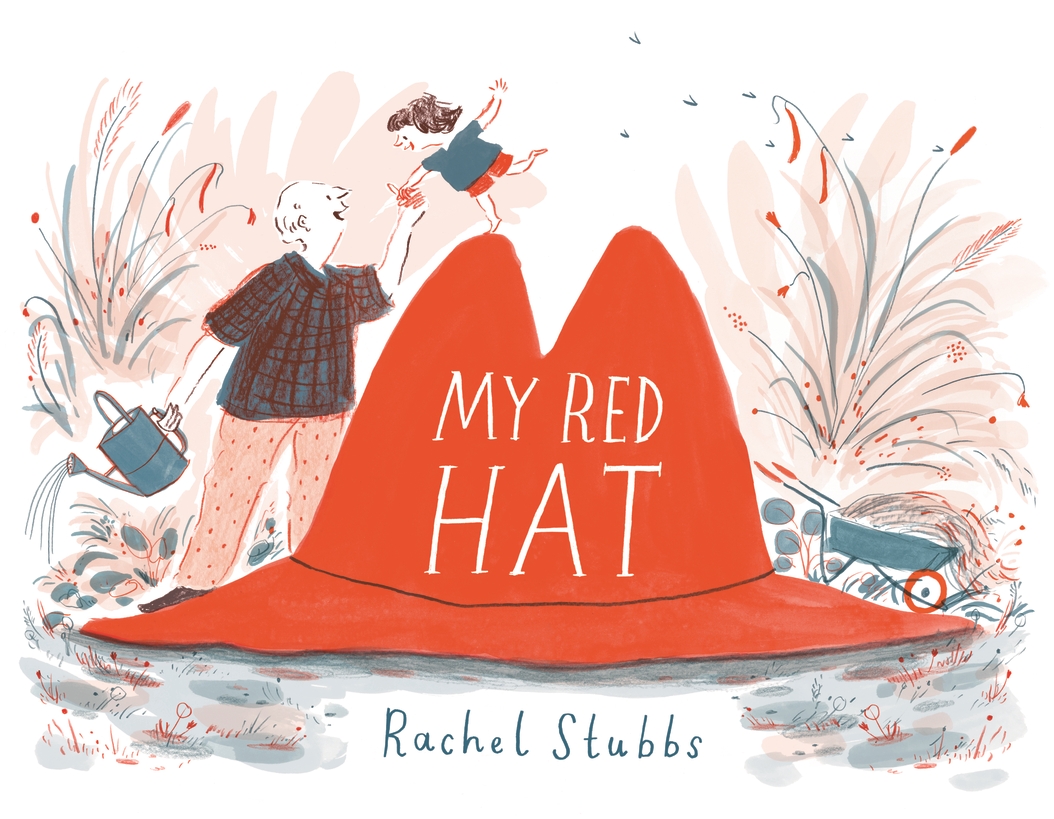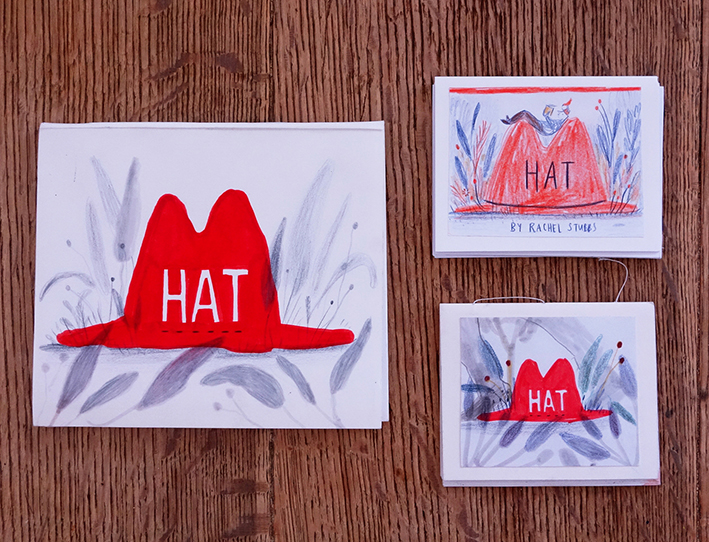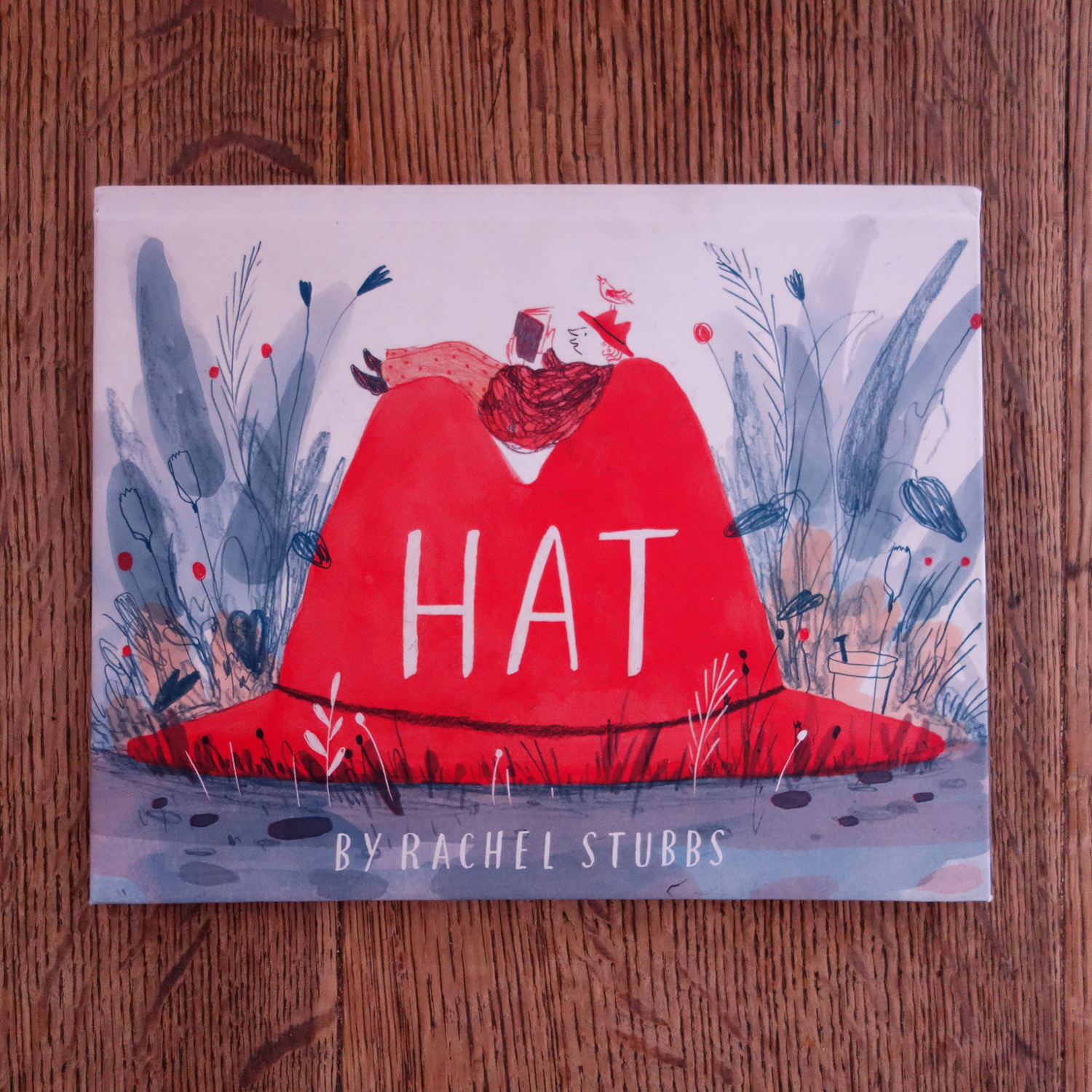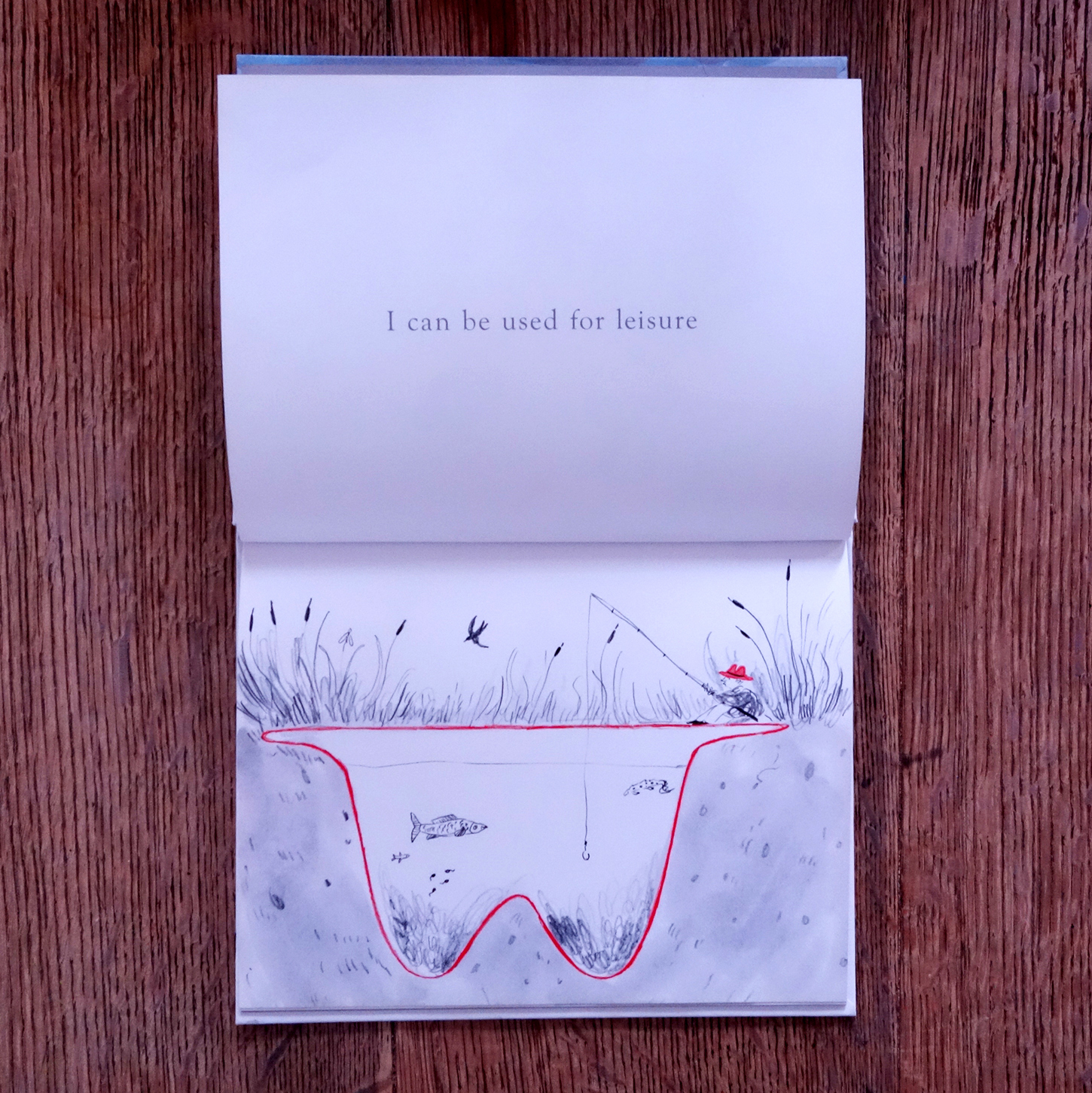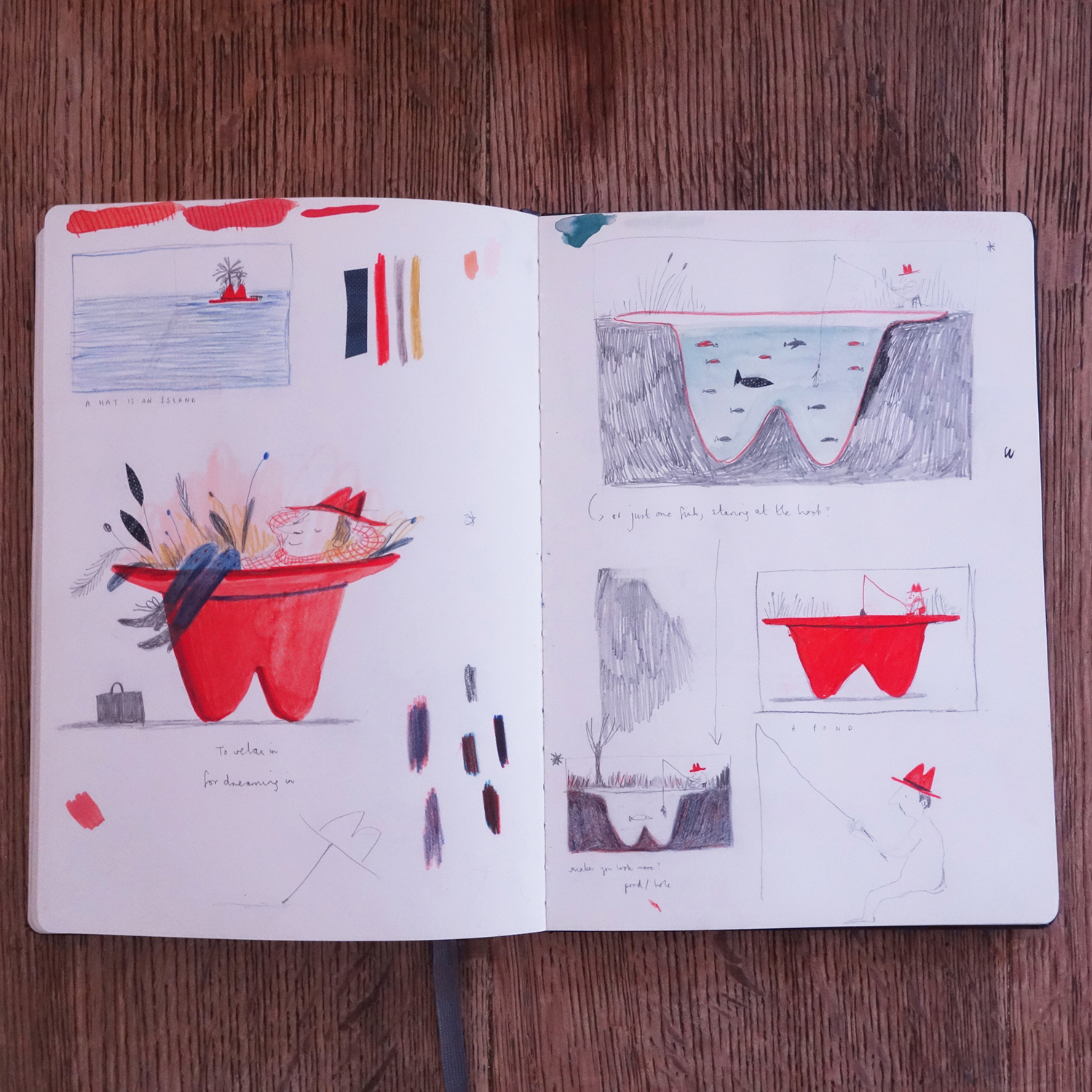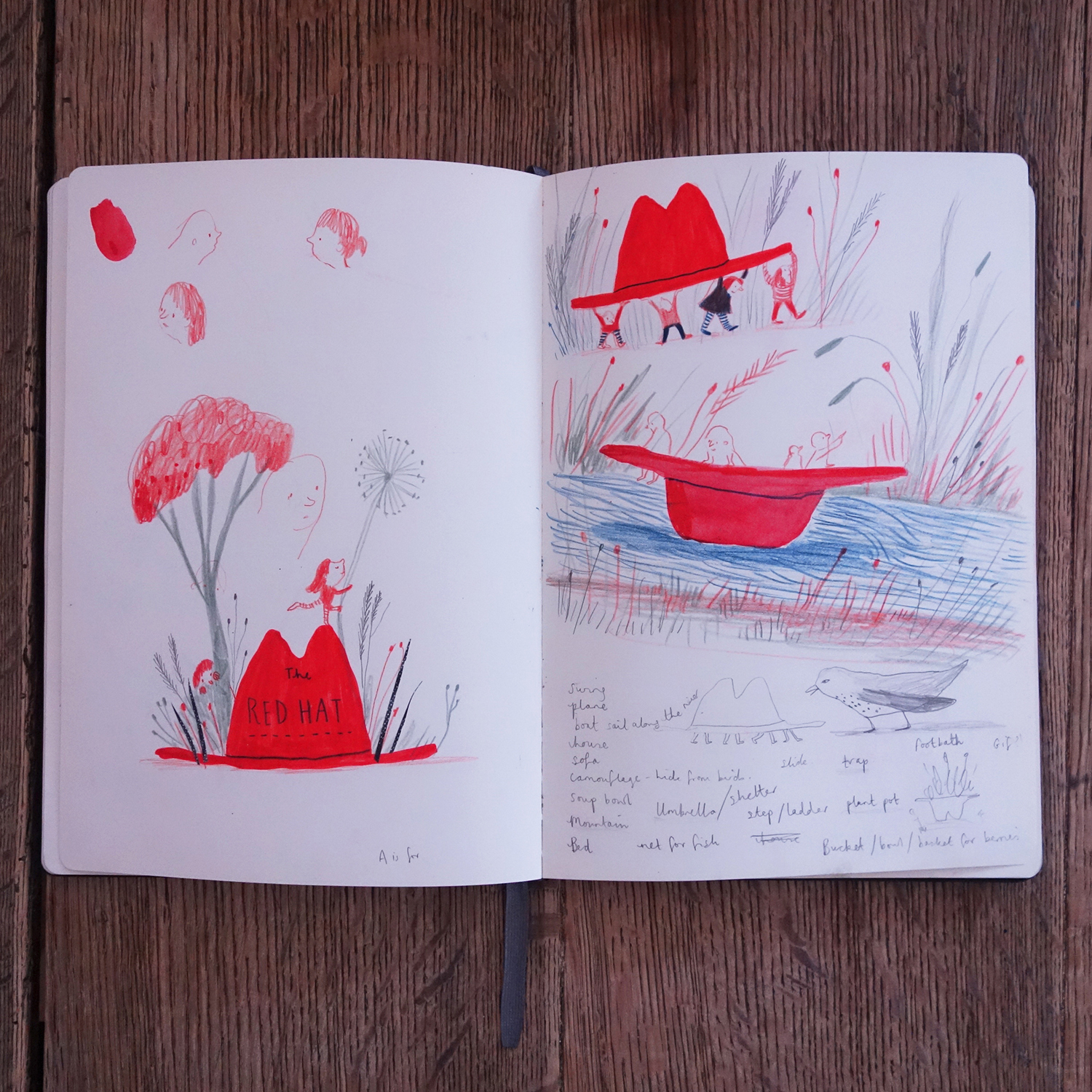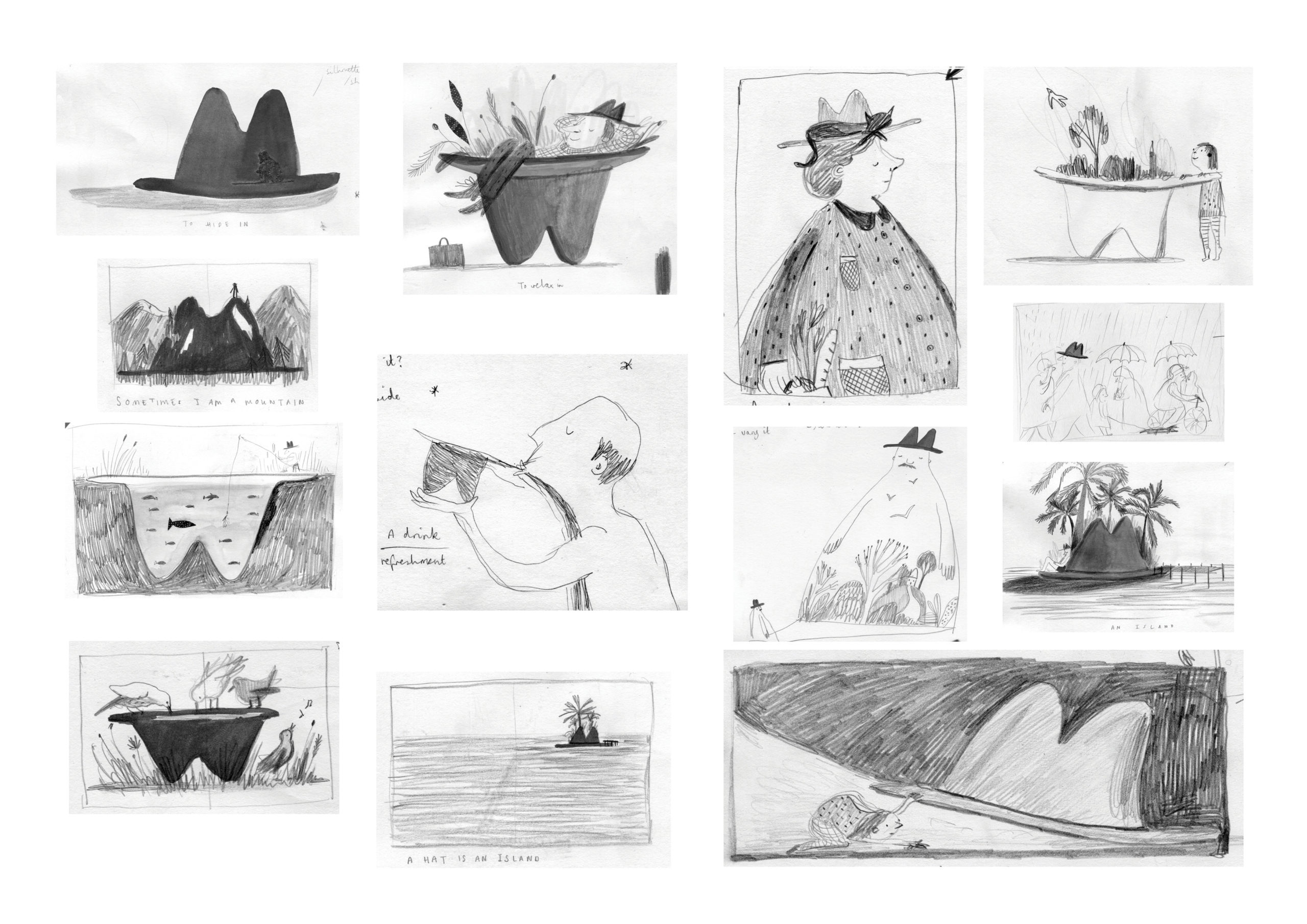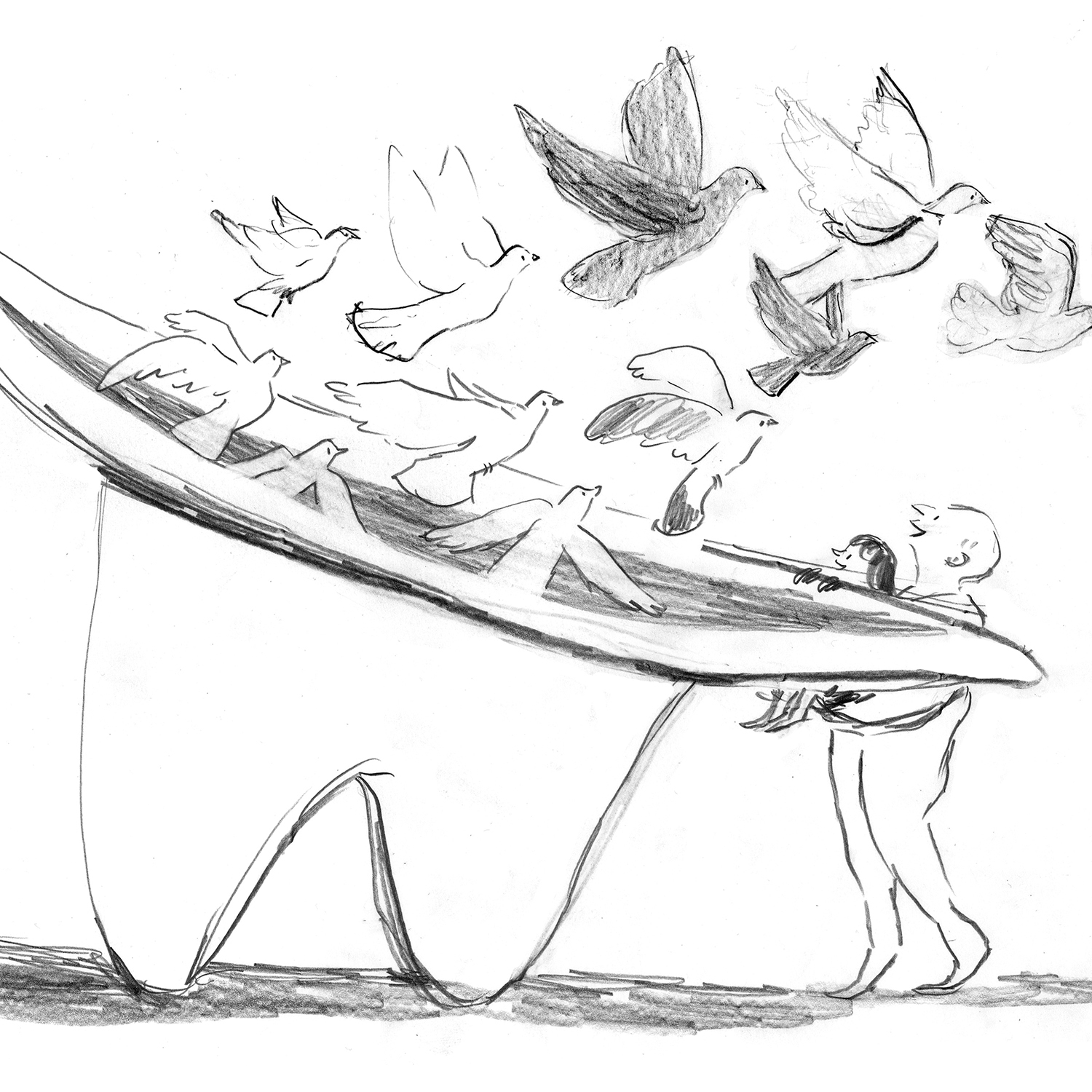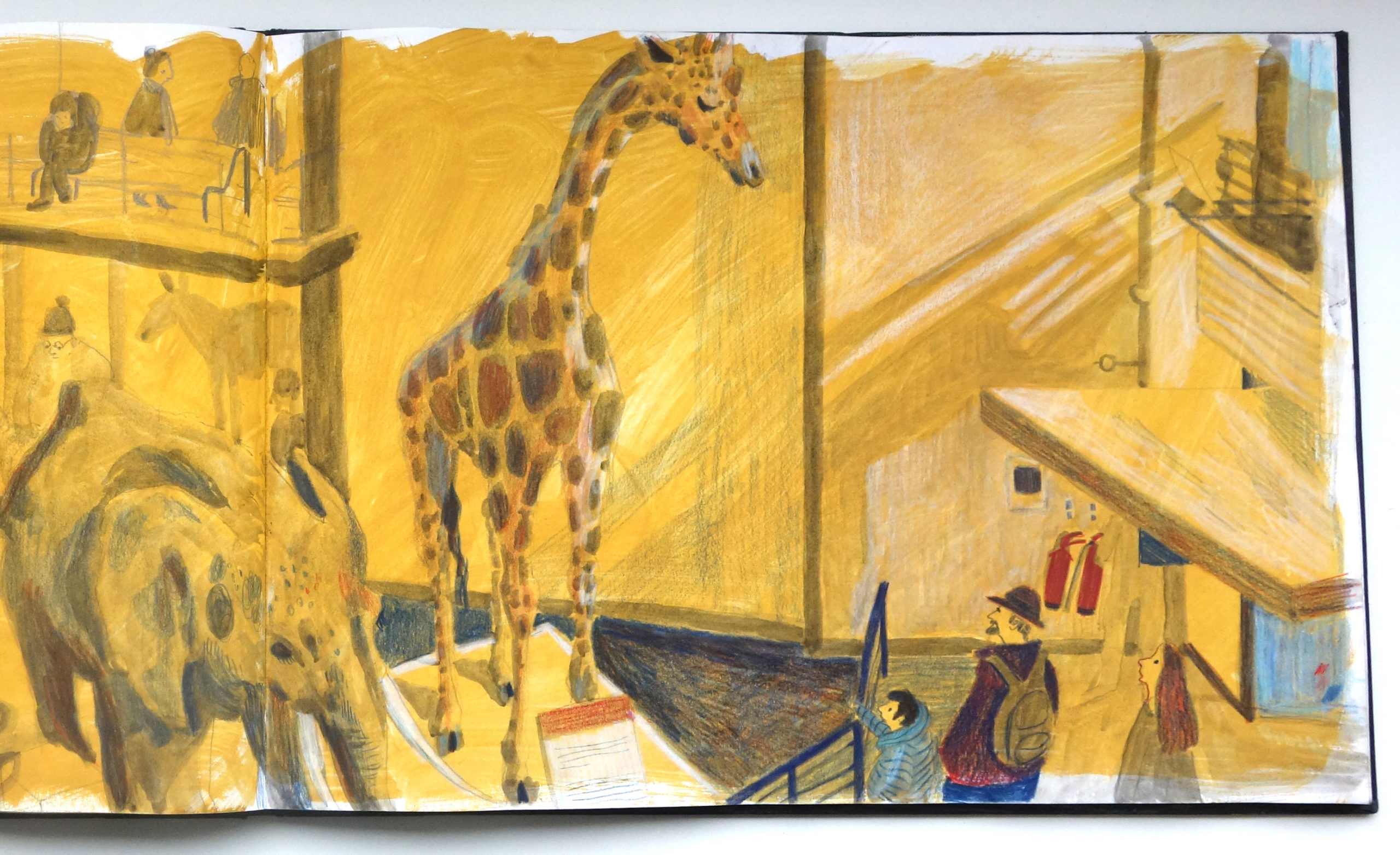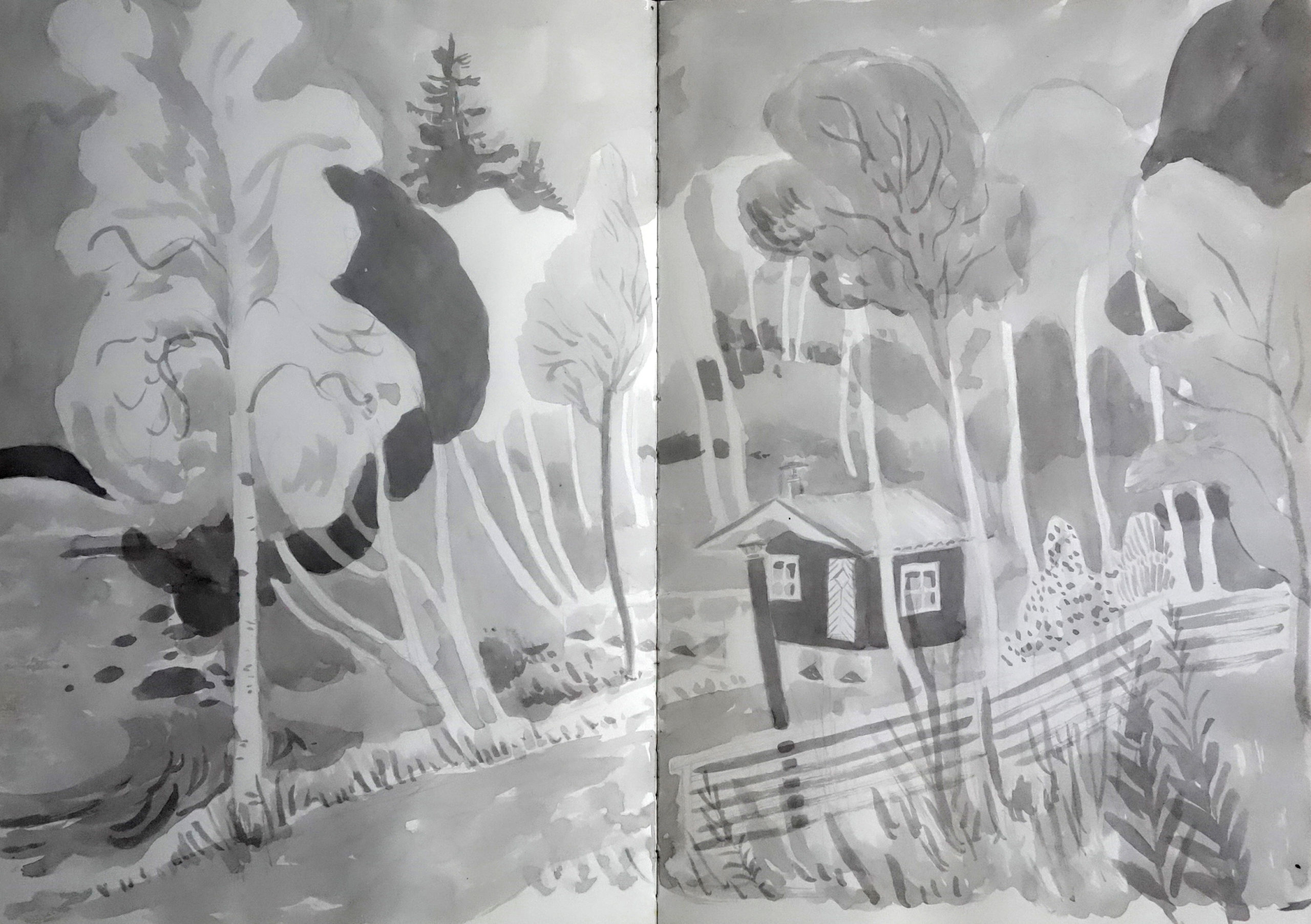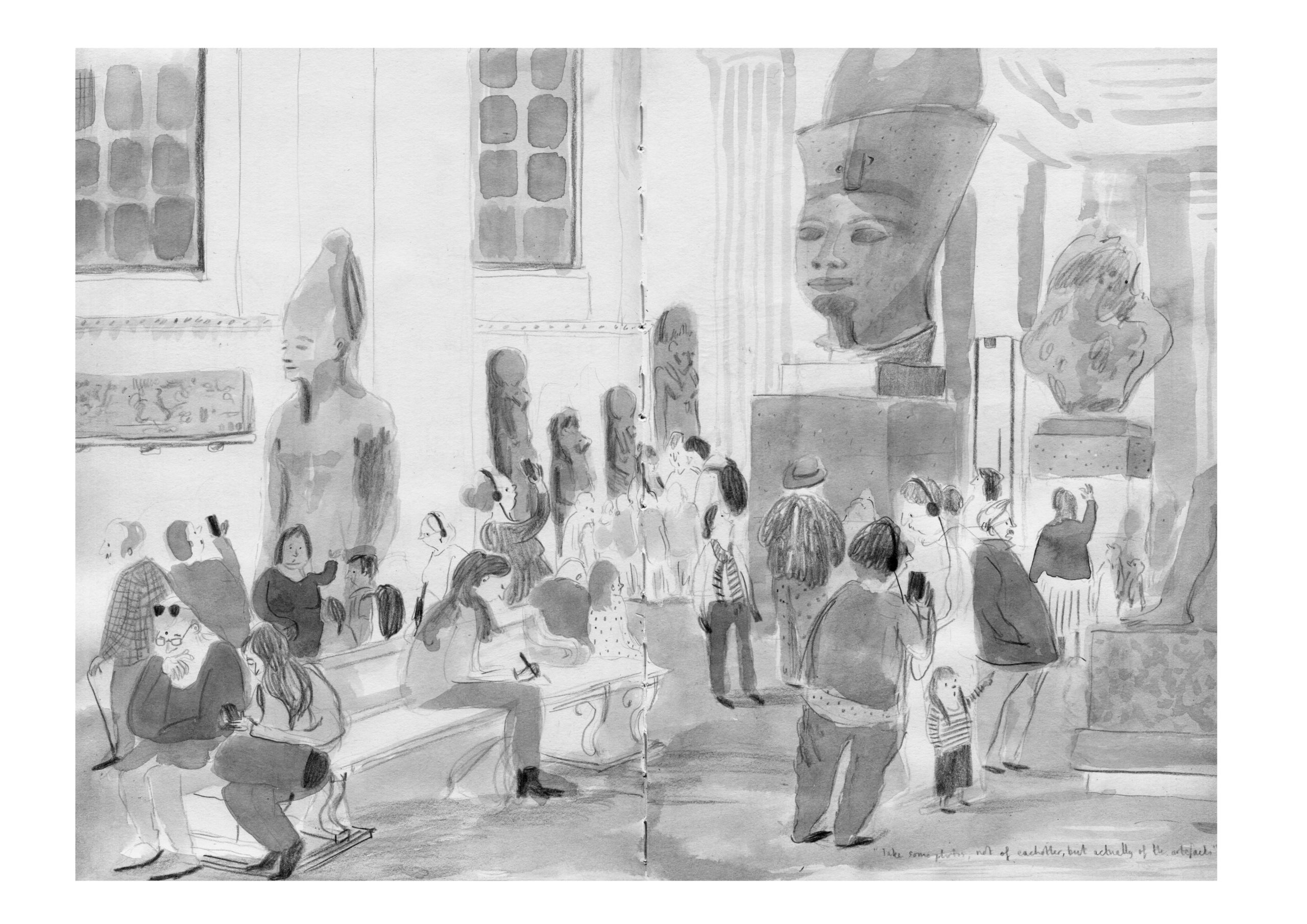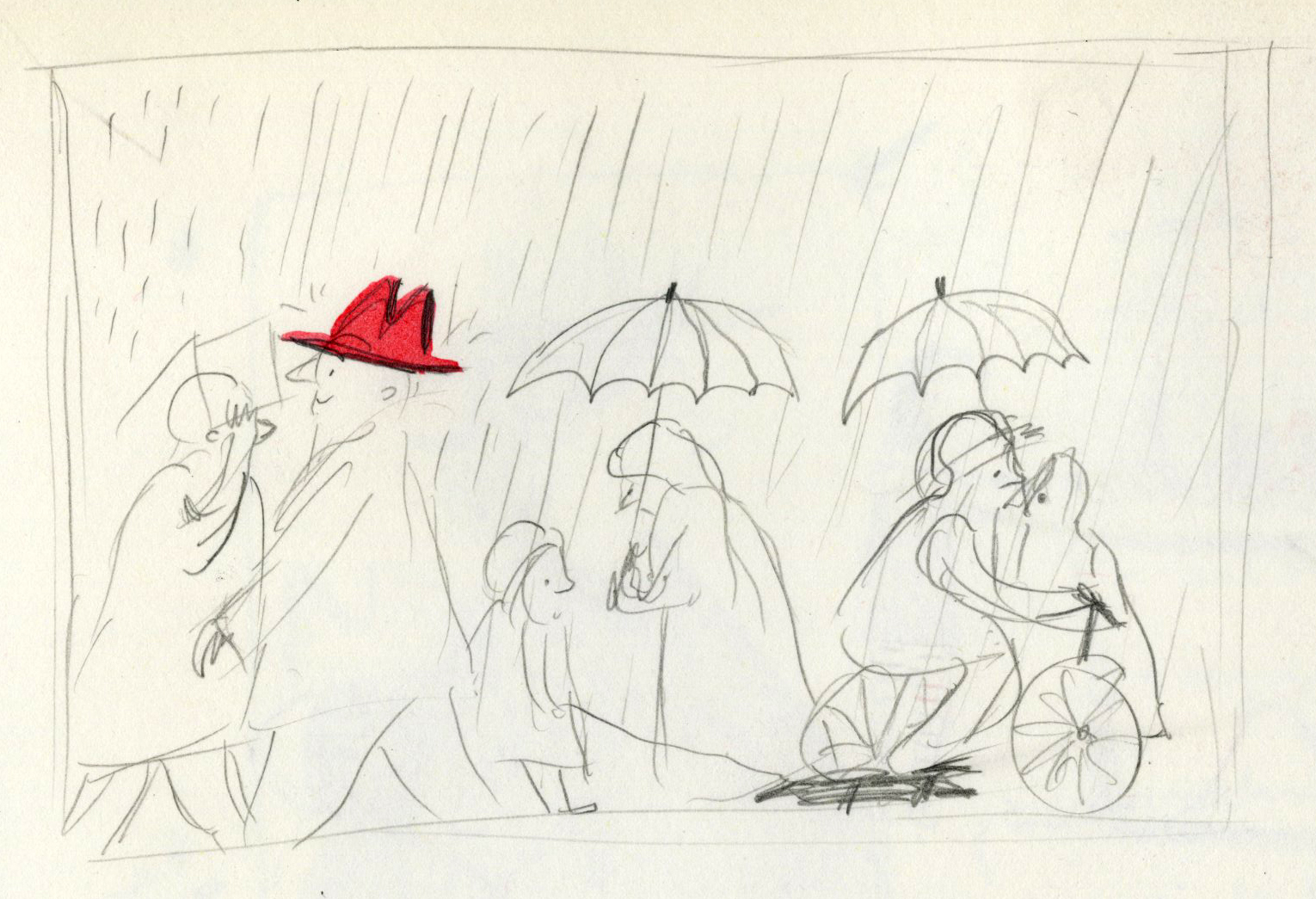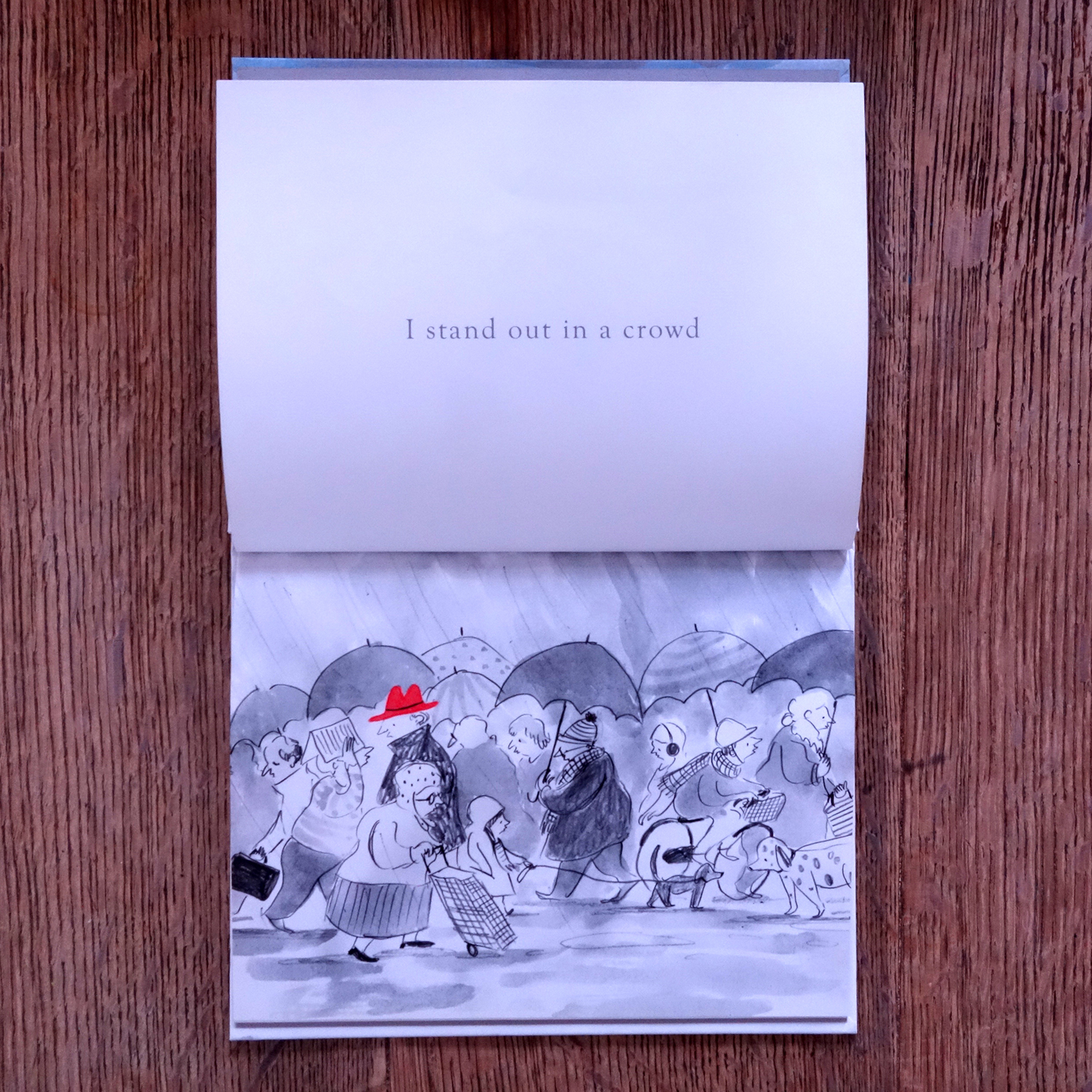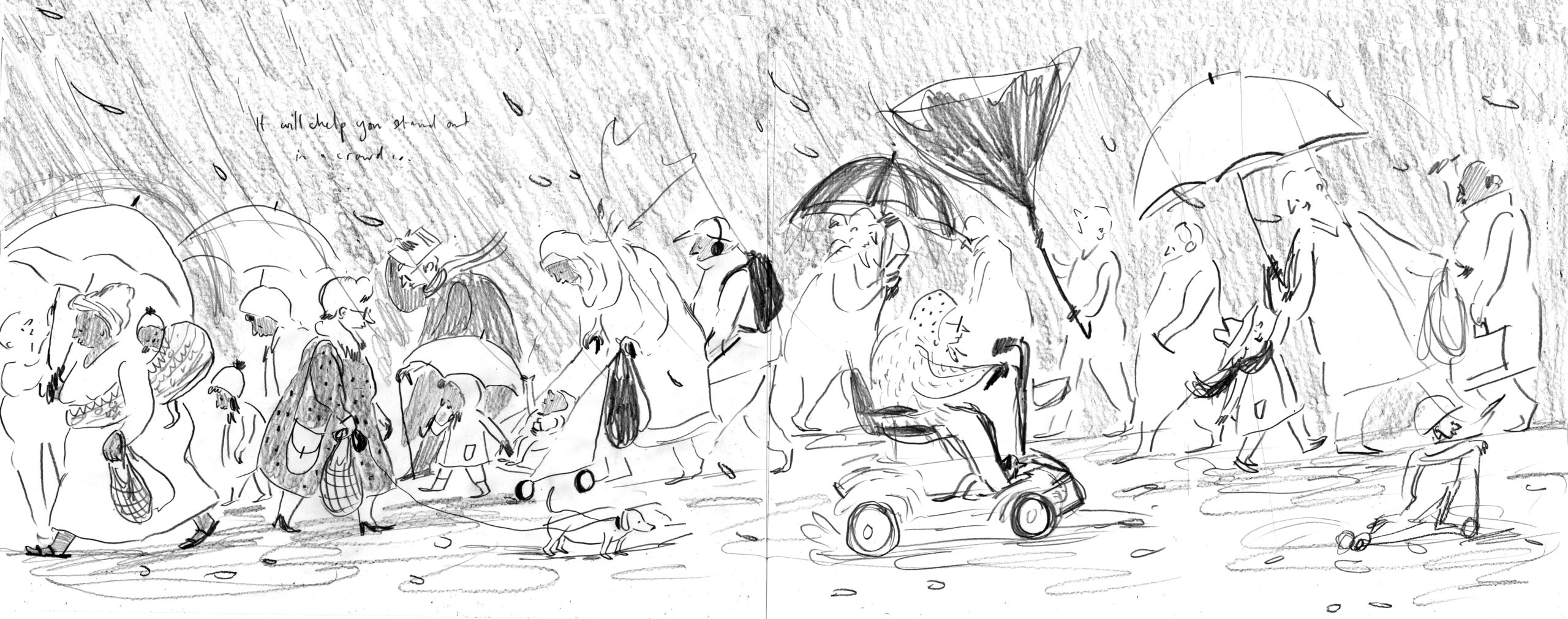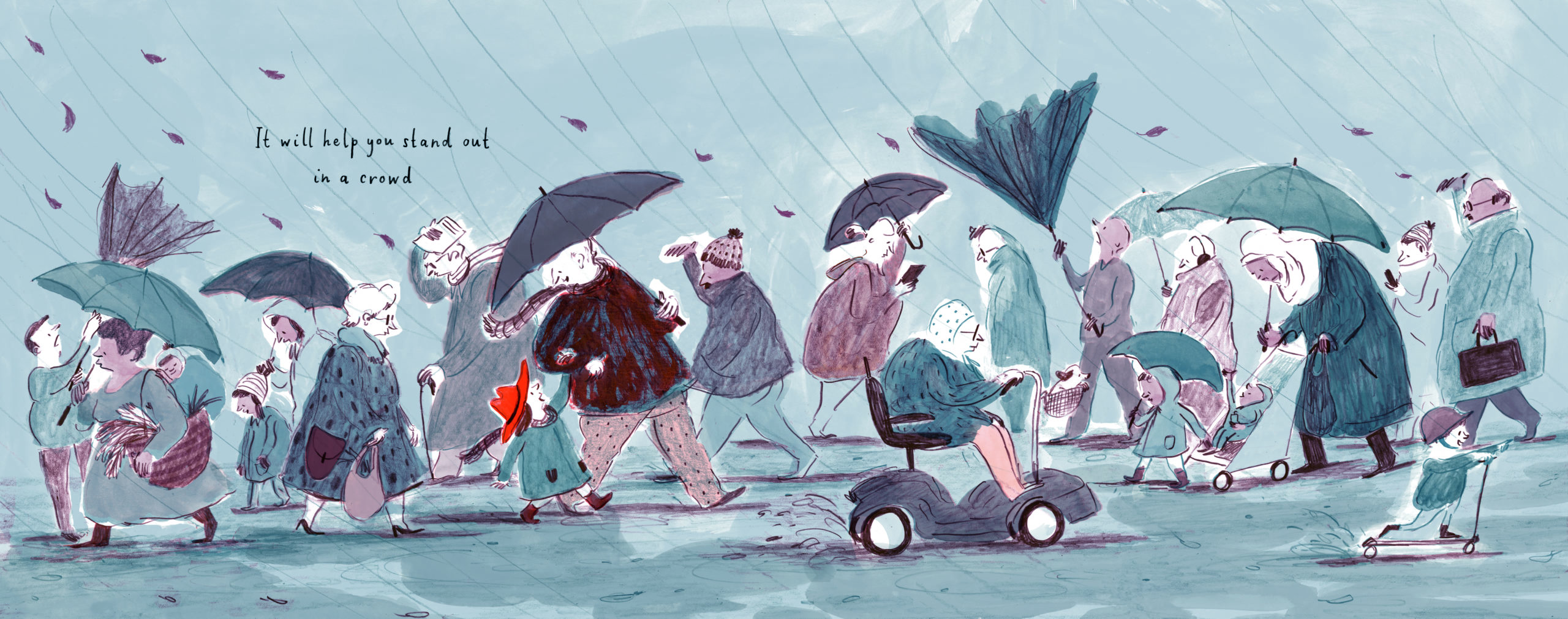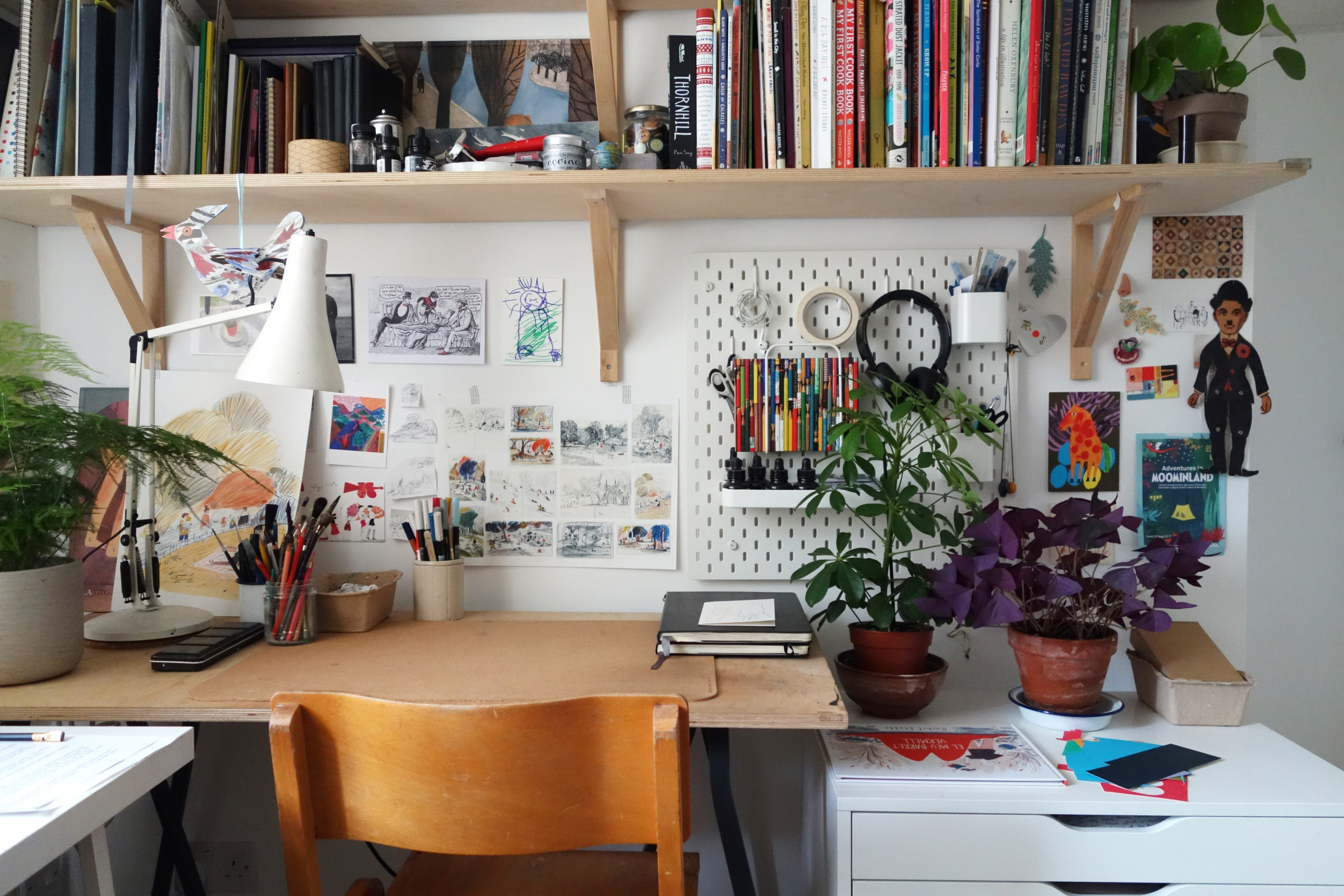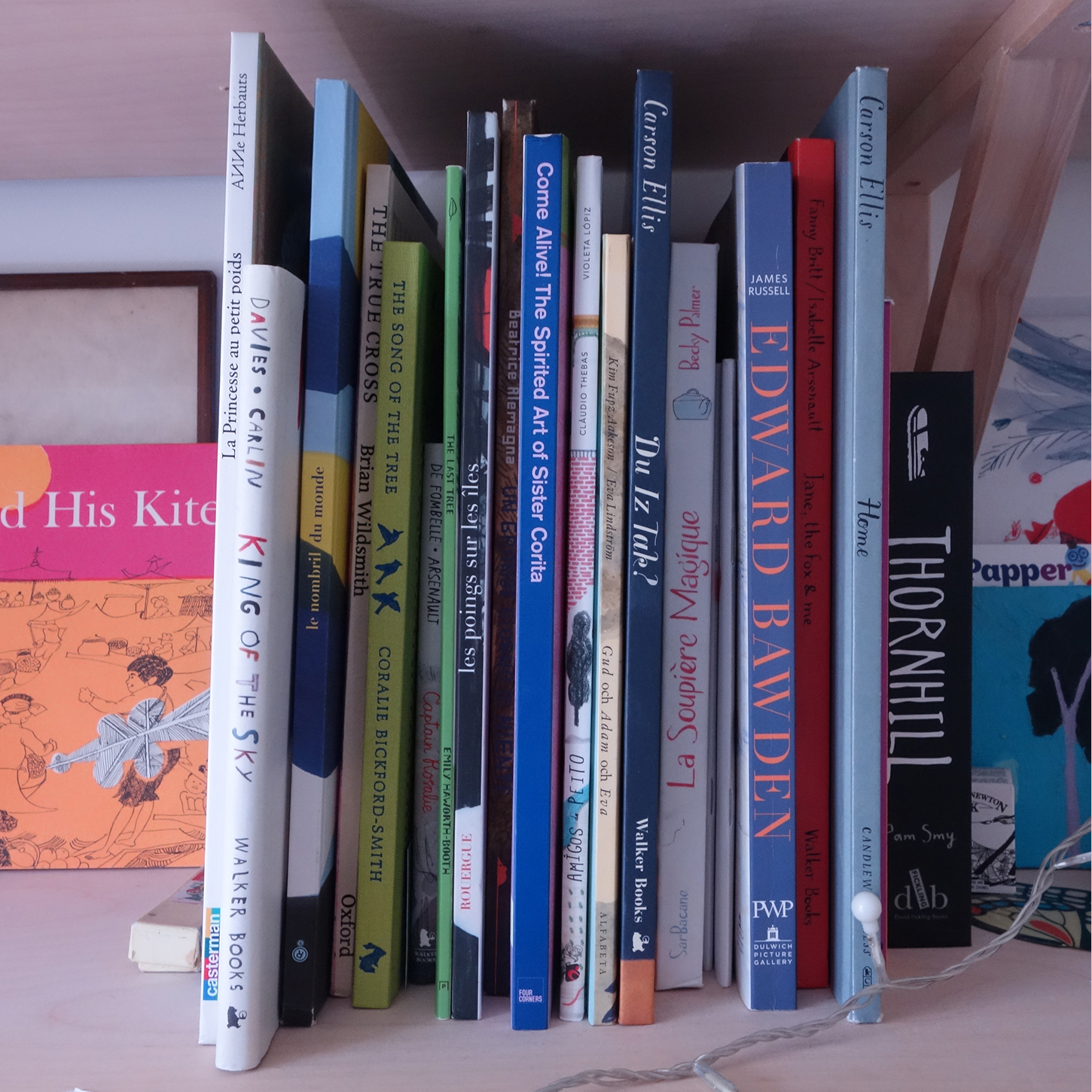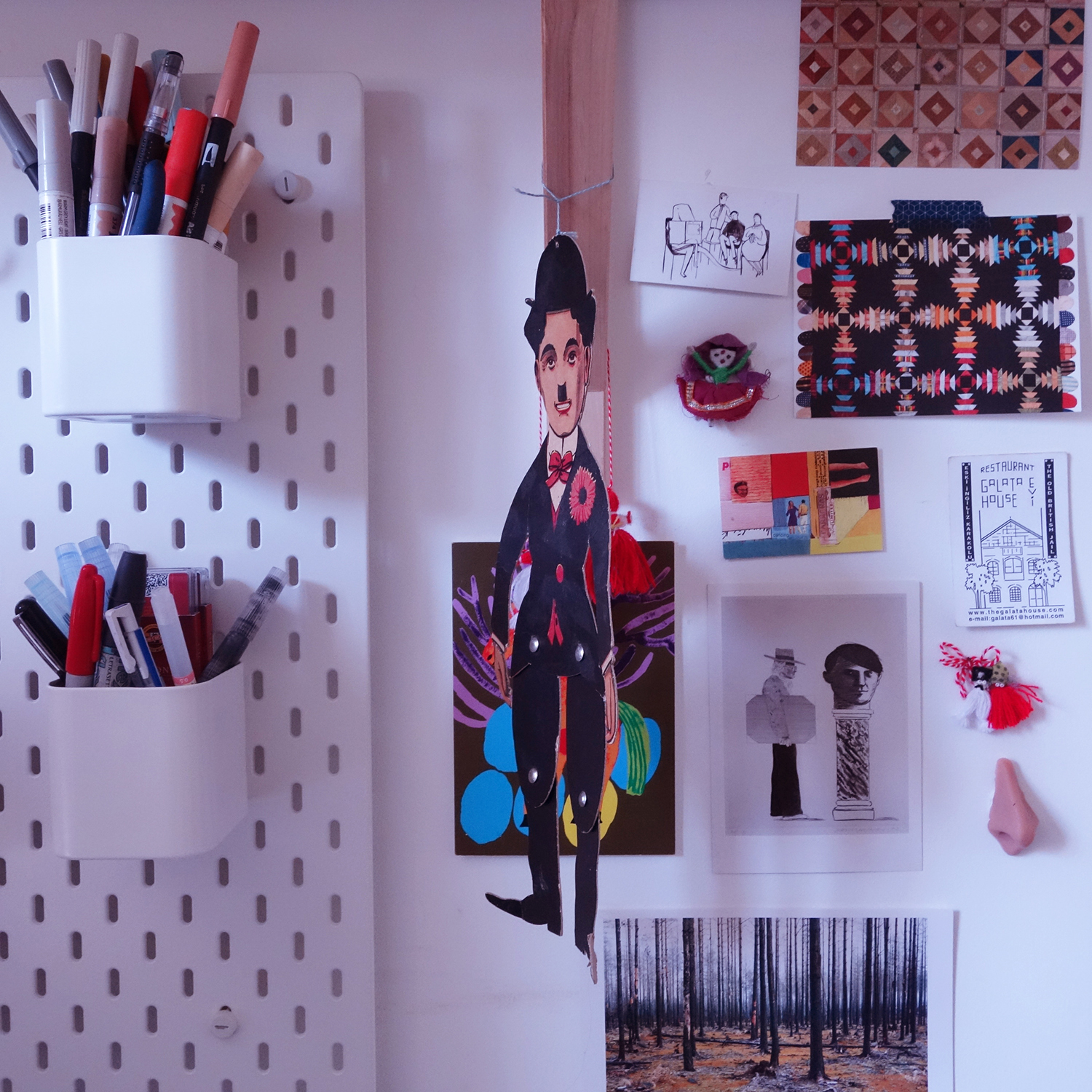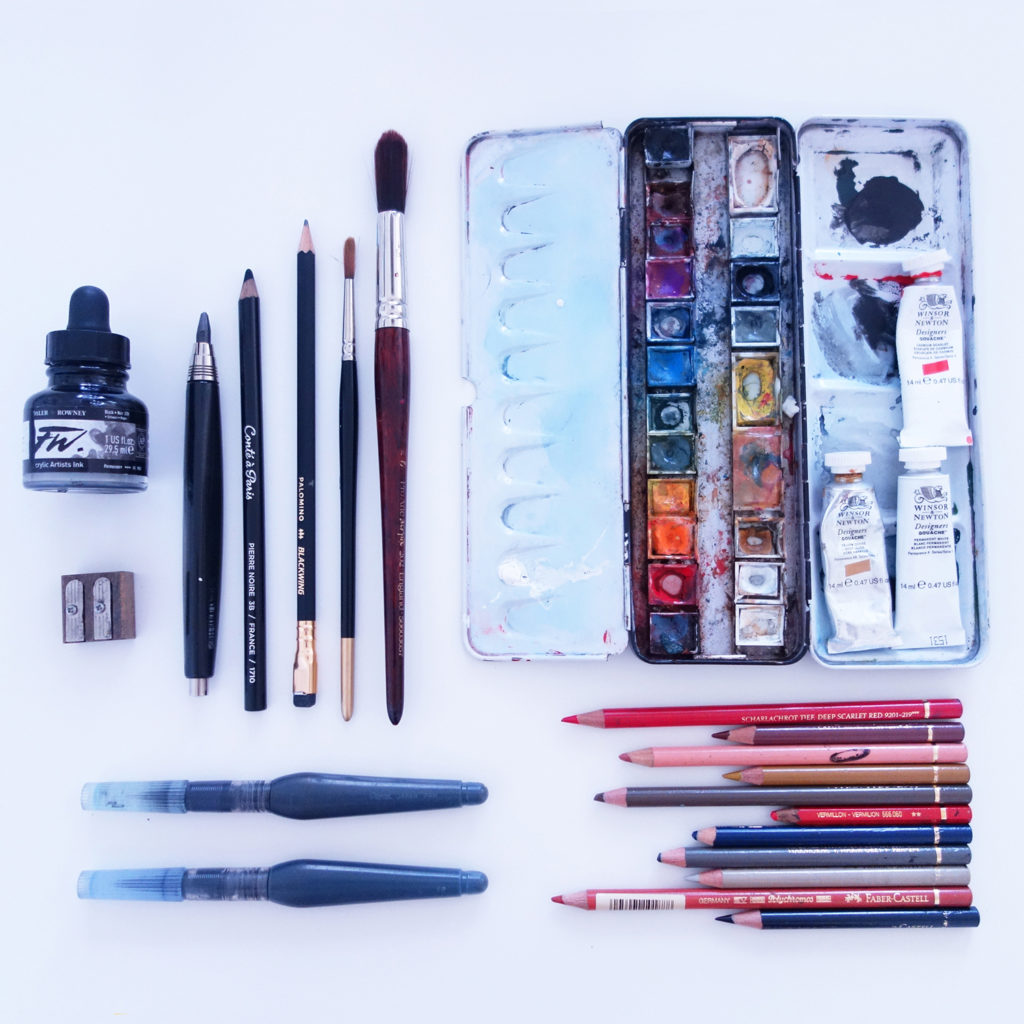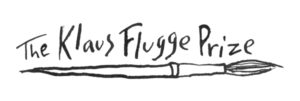
My Red Hat, illustrated and written by Rachel Stubbs
My Red Hat, illustrated and written by Rachel Stubbs, is one of the five books on the shortlist for the 2021 Klaus Flugge Prize.
The judges loved her use of colour and composition, and the sense of looseness to the illustrations.
Judge Mat Tobin interviewed Rachel about her book.
Mat: This was your first foray into picture book illustration. Can you tell us a little about how you came to work with Walker and some of the challenges that you had to overcome in working with the picture book format itself?
Rachel: I graduated from the Children’s Book Illustration MA in Cambridge several years ago and ended up working with Walker after receiving the Sebastian Walker Prize at our final show. I’d worked with them on a couple of small jobs before, so getting to collaborate on a whole book idea of my own felt very surreal!
There were so many more challenges than I could have anticipated - partly because I had a baby shortly after signing my contract which slowed the whole process down considerably, but also because I’d never written anything of my own before. The final dummy book I brought to our first meeting was quite complete visually but needed work structurally - so it was a bit like starting from the beginning. In order to find the right voice and pace, I had to let go of a number of spreads I’d become attached to which was painful but necessary for the book to work better as a whole.
Mat: Your book celebrates that intergenerational connection with such a tender touch and I loved the story behind the passing on of knowledge and joy through the hat. Can you talk us through the original idea for the book, the hat as the anchor for the narrative and any changes that the story went through during its original concept to completed design?
Rachel: Thank you so much, yes it changed a lot! I came up with the initial idea whilst playing around in my sketchbook and kept coming back to the image of a giant red hat. I loved its graphic shape and the playful compositions it allowed me to make, and started to think about all the different things a hat could be. I wanted to keep the text relatively sparse and let the images do most of the storytelling, and eventually wrote a short piece of text inspired by my sketches. I tried not to worry too much about a specific audience at this point and just had fun making images and learning about sequencing.
The more tender, intergenerational focus of the book didn’t come about until later in the process when I started working on it with Walker. We started to experiment with adding a child into the equation and soon found it solved a lot of the issues we’d be grappling with and brought everything together. I also switched around the format to create more space to tell the story and changed the voice to that of the Grandpa, which seemed to make more sense in the end.
Mat: The Children’s Book Illustration MA at Cambridge School of Art (Anglia Ruskin) which is renowned for guiding some of our best illustrators. Can you talk a little about your time there and what you took away from the experience?
Rachel: I’m so grateful to have had the opportunity to study on the MA and be taught by such insightful and nurturing tutors. I’d been working as a freelance illustrator for years beforehand and was feeling somewhat burnt out and disillusioned - my work no longer felt like my own and I needed somewhere away from client briefs and deadlines where I could experiment and make mistakes freely.
The MA is known for its rigorous approach to observational drawing, and after getting over my initial fear of drawing in public I soon became hooked. I loved the experience of drawing outside in all weathers - it got me out of my head, made me draw faster, helped me to generate ideas and improved my drawing from memory and imagination. Slowly but surely, my drawings became looser and more relaxed as I started to build up a richer visual vocabulary of my own.
The challenge was then to somehow translate some of this playfulness into my illustrations - something I’m still chasing after today and probably always will be! Experimenting with the print facilities was also hugely valuable in learning more about line and colour, and I made some wonderful friends on the course that are still a huge support today, both professionally and personally.
Mat: The whole concept of journeys in My Red Hat is beautifully explored. There is the little girl’s imaginative journey and that shared journey the grandfather has alongside her. Was there a particular spread that you were very pleased with and can you talk us through it?
Rachel: Thank you! Making the artwork was a journey in itself, with a lot of trial and error. One of my favourite images from the book is probably the rainy double page spread, as this is an image I had clearly in my head from the very beginning.
A lot of the images benefitted from rotating the format of the book, and this one in particular felt much more like a bustling street scene as a longer landscape. In order to create an interplay with the text, I knew I wanted the hat to be the only pop of pure red on the page, and for the rest of the image to be made using overlays of pink, blue and red. I made all of the layers separately by hand using black ink and pencil before layering them up on the computer and changing the colours digitally - but tried to use the computer as minimally as possible. I really enjoyed drawing all the different people and details and the woman on the mobility scooter with the dog might be my favourite character in the whole book. Charlie Moyler, my designer, came up with the idea of the leaves blowing across the page and the inside-out umbrellas which are small details but make all the difference I think.
Mat: Can I be cheeky and ask for a tour of your workspace. It’d be great to see some of the materials that you work with or spaces that are important to you.
Rachel: I work from home in our sunny spare room in South East London, which overlooks lots of trees and sky, and a rumbling train line beyond. This may sound idyllic but in reality it’s a sea of paper, books and discarded mugs most of the time, no matter how hard I try! I love the flexibility of working from home, especially since having my son - but it can be a challenge to separate work life and the domestic. I’ve worked in shared studio spaces in the past and would love to return to this at some point. I use my sketchbooks for reference a lot, especially if I’m feeling stuck during a project and need to be reminded of how I’ve problem solved things in the past.
Mat: Can we look forward to more picturebook work from you in the future? I know you’ve created your own stories in the past. Do you prefer the freedom that working with your own words brings and would you like to collaborate with others?
Rachel: Definitely! I would love to do make more books of my own and am working on some new ideas at the moment. However, I can also see the appeal of collaborating with a writer and being able to focus on the image making. I think there’s something very powerful about collaboration and illustrating ideas you would never have been able to come up with yourself. Both approaches stretch you in different ways and can be equally rewarding.
Mat: Can you talk us through your journey to becoming an illustrator. Were there any picture book illustrators who had an impact on you (inspired you) when you were younger?
Rachel: I remember devouring everything we owned by the Ahlberg’s when I was little, for their wonderful characters, humour and details. My brother and I were also huge fans of The Giant Jam Sandwich illustrated by John Vernon Lord and I loved disappearing into the worlds of Beatrix Potter and Quentin Blake.
My journey to becoming an illustrator has been full of twists and turns and its taken me a while to work out what I want to communicate with my work - and the sort of illustrator I want to be. I originally studied Illustration in Falmouth, Cornwall, which was such a formative time, although I didn’t become seriously interested in picture books until much later. After graduating I went through a lot of ups and downs with my work and sometimes felt like I knew what I was doing - but other times really lost! I did do a lot of work for many different clients during this time, but never really felt I’d found my voice.
It wasn’t until I did the MA in Cambridge that I started to find a way of working that really felt like it was mine. It didn’t come straight away and is still very much evolving - but towards the end of the course a lot of the things I’d been pushing for started to come together, and my work felt richer and more interesting to me than it had for years.
Mat: Are there are any contemporary artists/illustrators whose work you admire and think everyone should encounter them?
Rachel: Yes! Too many to mention here. A couple of artists whose work I have on my walls are Pia Bramley and Jo Waterhouse, and I’d love to see both of their work in book form one day. Pia’s drawings are so cleverly observed and I love the way she captures snapshots of everyday life with such raw honesty, humour and tiny details. They are really captivating! Jo comes from a printmaking background and creates the most inventive and characterful collages, inspired by her imagination, British folklore and everyday objects. I love all the different materials, patterns and textures she uses and could stare at them for hours. She also runs a card company called Hadley Paper Goods who make the best cards in the business.
My Red Hat is published by Walker Books, 978-1406394368, £7.99 pbk
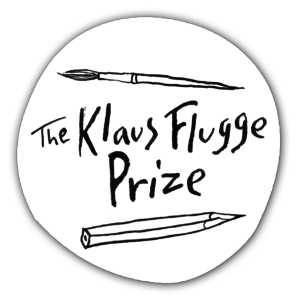
The Klaus Flugge Prize is funded personally by Klaus Flugge and run independently of Andersen Press.
Website maintenance & Copyright © 2024 Andersen Press. All Rights Reserved. Privacy & Cookie Policy.
